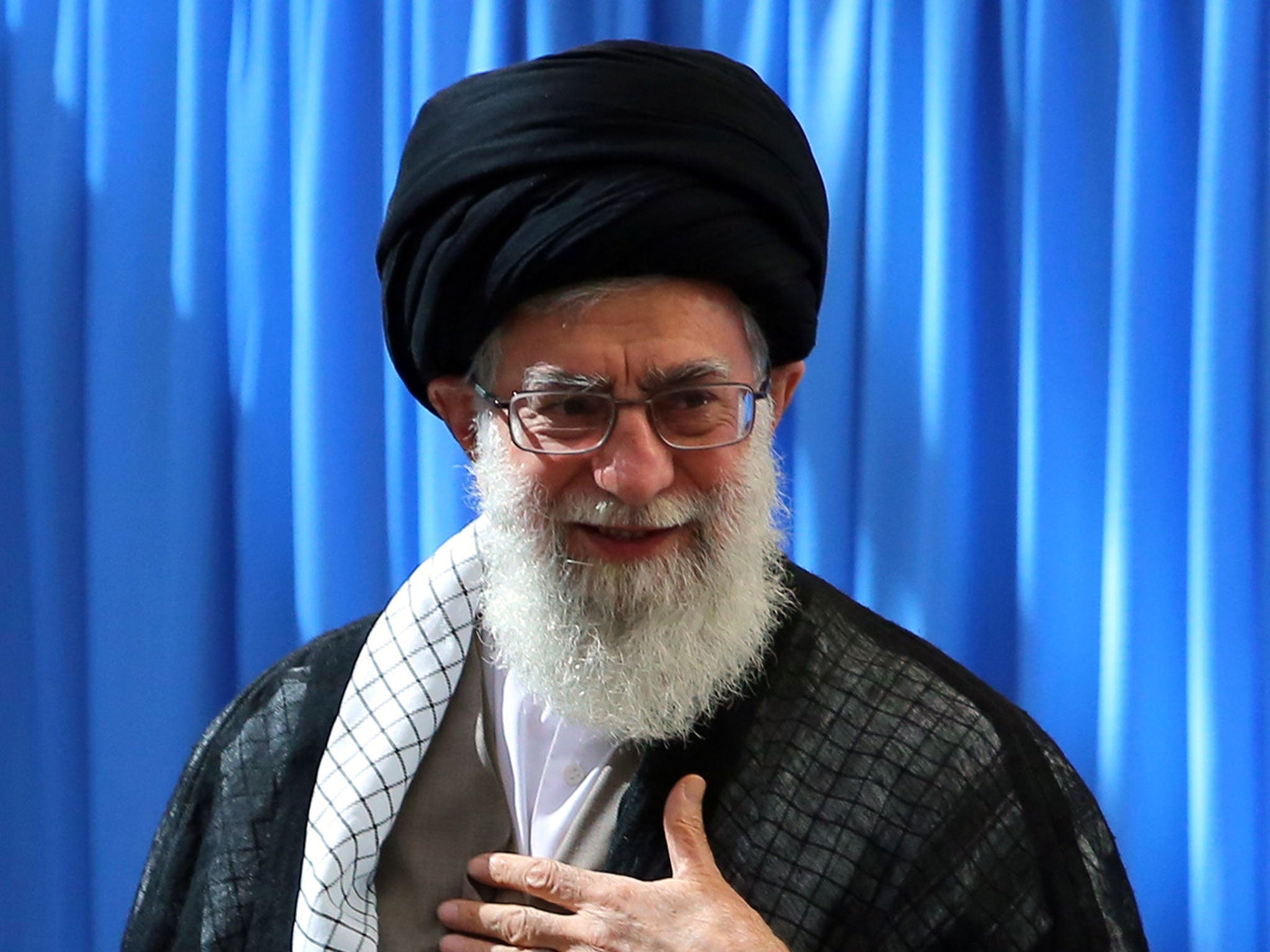Saudi Arabia executions: Riyadh expels Iranian diplomats amid rising Shia and Sunni tensions as protests erupt across the Middle East
Iranian leader warns Saudi Arabia to expect 'divine vengeance' after the execution of Shia cleric Sheikh Nimr al-Nimr

The leader of Iran has warned Saudi Arabia of “divine vengeance” following its execution of a prominent Shia cleric and 46 others as protests erupted across the Middle East.
Washington called on the region’s two primary powers to avoid heightening tensions as demonstrators protesting against the execution of Sheikh Nimr al-Nimr broke into the Saudi embassy in the Iranian capital of Tehran and set it ablaze.
The incident was condemned by the Iranian authorities but an escalating war of words between Tehran and Riyadh underlined how the mass executions had opened a rancorous new chapter in the ongoing struggle between Islam’s Shia and Sunni sects.

On Sunday night, Saudi Arabia broke off diplomatic ties with Iran. The Foreign Minister, Adel al-Jubeir, said that all Iranian diplomats must leave the kingdom within 48 hours, and the Dubai-based al-Arabiya television channel reported that Saudi Arabia had evacuated its diplomats from Tehran.
Ayatollah Ali Khamenei, the Supreme Leader of Shia-dominated Iran, lambasted Saudi Arabia for a second day, describing Sheikh Nimr as an “oppressed martyr” and predicted that “divine vengeance will befall Saudi politicians”.
In Riyadh, the foreign ministry said that by condemning the execution, Iran was supporting terrorism.
The recriminations also spread beyond the two lead antagonists in the Muslim world’s Shia-Sunni split.
In Lebanon, the leader of Hezbollah, which has been fighting on the side of Syria’s President Bashar al-Assad against Sunni insurgents in the country’s civil war, said the death of Sheikh Nimr was a “message of blood”.
Sayyed Hassan Nasrallah accused Riyadh of seeking to spread sectarianism. Referring to Saudi Arabia’s ruling family, the Shia group’s leader said: “Al-Saud wants Sunni-Shia strife. They are the ones who ignited it, and are doing so in every part of the world.”
As well as in Tehran, crowds of protesters gathered outside the Saudi embassy in the Lebanese capital of Beirut while demonstrations took place in Bahrain, Turkey, Pakistan and northern India.
In Sunni-ruled Bahrain, police fired birdshot and used water cannon to disperse demonstrators who had been chanting the name of Sheikh Nimr as “our martyr”. The cleric was an outspoken critic of his country’s Sunni monarchy and was widely seen as a leader of younger Shia activists both in Saudi Arabia and neighbouring Bahrain.
Sheikh Nimr’s execution also sparked protests in his native Qatif region in eastern Saudi Arabia, where family members prepared for three days of mourning in the town of al-Awamiyah. The sheikh’s brother said he had been told he would not be receiving his body because the cleric had already been buried in an unnamed cemetery.
The execution is likely to complicate Saudi Arabia’s relationship with the Shia-led government in neighbouring Iraq, where the Iraqi Prime Minister Haider al-Abadi is facing calls to close the Saudi diplomatic mission down.
The Iranian President Hassan Rouhani went out of his way in his condemnation of Sheikh Nimr’s execution to also describe as “unjustifiable” the actions of 40 people who broke into the Saudi embassy in Tehran in the early hours of Sunday. The mob broke furniture, started fires and threw documents from the roof.
In Washington, the State Department called on the Iranian government to protect the Saudi embassy and called on both countries to refrain from “any actions that could further heighten tensions”.
But as both countries continued to trade accusations, with Riyadh accusing Iran of “blatant interference” in its internal affairs, there was little prospect of either side stepping down. In Tehran, the sign on the street where the Saudi embassy is was changed to “Sheikh Nimr St”, and the Supreme Leader’s website carried a picture of a Saudi executioner next to the Isis killer “Jihadi John” with the caption “Any differences?”
Join our commenting forum
Join thought-provoking conversations, follow other Independent readers and see their replies
Comments